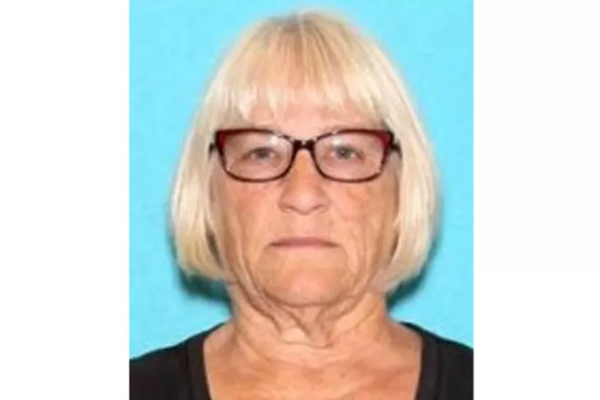
Mötley Crüe helped put the 80s Sunset Strip glam metal scene on the map – and their fourth album, 1987’s Girls, Girls, Girls, took them to another level. In 2009, Crüe drummer Tommy Lee looked back on the record that celebrated sex, strippers and motorbikes - even if their lifestyles almost killed them.

Long before Guns N’ Roses clawed and snarled their way to superstardom, Mötley Crüe were the hottest band to emerge from the 80s Sunset Strip scene.
Sleazier, trashier and more outrageous than any of their peers, they hit the ground running with 1981’s instant-classic debut album Too Fast For Love, initially released on their own Leathür Records before being snapped up, remixed and reissued by major label Elektra.
The subsequent injection of cash and corporate muscle only helped propel them upwards. The parent-baiting shock-metal of their second album, 1983’s Shout At The Devil, helped it reached the US Top 20, while 1985’s Theater Of Pain saw them tone down the make-up slightly and hit the Top 10.
The band themselves left a trail of carnage in their wake, thanks to their predilection for vast quantities of booze and class A drugs. But it had a dark side too, not least when Nicholas ‘Razzle’ Dingley, the English-born drummer with Finnish glam tarts Hanoi Rocks, was killed in a car crash while being driven by drunken Crüe singer Vince Neil.
As the band geared up to record their fourth album, Girls, Girls, Girls, it was clear to everyone that Mötley Crüe were out of control. Everyone except Mötley Crüe themselves, that is.
“If I had to describe our state back then, I’d say we were beautifully broken, or functionally dysfunctional,” says Tommy Lee now. “It seemed to us that we had our shit together, but we were really fucked up. The trouble was, we were in no fit state to realise how bad things had become. Which was perhaps a good thing.”
The job of herding these drunken, messed up cats into the studio fell to producer Tom Werman, who had worked with the band on Shout At The Devil and Theatre Of Pain.
“Summing up our relationship with Tom, I’d say that he was like our mum!” says Lee. “I don’t know how he dealt with the craziness that surrounded us. “He was like an old lady on ADT. He also drank a lot of wine to help him cope, and he’d occasionally freak out at us. But Tom kept coming back for more, so he must have liked what we did!”
Despite the band’s success so far, the pressure was on to keep it up. Elektra reportedly demanded their new album contain at least two hit singles, though Lee denies any meddling on the part of the label.
“We never bothered about that sort of thing,” he says. “If Elektra had demanded singles from us – which they didn’t – I think our response would have been, ‘Fuck you!’ We never sat down and thought about having hits. We just wrote what we felt worked.”
Despite their increasingly wayward lifestyles – bassist Nikki Sixx’s drug of choice had become heroin – Mötley Crüe were nothing if not prepared before they began work on the album in November 1986.
The songs might have been ready, but that doesn’t mean the band themselves were. They spent four months recording the album in three different studios in LA.
“If we’d been straight and hadn’t been fucked up so much, then the album would have been done in about two months,” says Lee. “But we were off our heads a lot of the time. There’d be times when one or more of the band didn’t show up for a day or two, because we’d been partying too hard. It wasn’t unusual for one or more of us to go missing, so the days just slipped away. In the end, we were lucky to have as much time as we needed. Nobody was putting the screws on us to get it finished.”
The album, brazenly titled Girls, Girls, Girls, was finally finished in the early spring of 1987. The Crüe’s debauched spirit was summed up in its first two tracks.
Electrifying opener Wild Side began with guitarist Mick Mars’ revving his instrument like a motorbike, before the song takes a tour of Hollywood’s seedy underbelly with all its street dealers and trash queens. Even more emblematic was the title track, a hymn to some of the Crüe’s favourite people on the planet: strippers.
“Man, that was written about what we did every day when out there touring,” says Lee. “We’d go into a city and what happened? We’d check out the strip bars. It was so normal for us. And every one of them would have a flashing neon sign outside screaming ‘Girls Girls Girls!’ That phrase was just burnt into my head. So, for us it was just logical to write this song – paying tribute to what kept us going on the road.”
But there was a flipside to the tales of neon-soaked strip joints and junkie-infested sidewalks. Girls, Girls, Girls also featured a handful of songs that showed the band’s sensitive side. Chief among these was the stirring Nona, inspired by the death of Nikki Sixx’s beloved grandmother.
“They were very close, and she had helped to bring him up,” says Lee. “It was very much Nikki’s song. I know some people have questioned whether a tune like that belongs on a Mötley Crüe album, because it seems out of character with what we usually write about, but… well, we are Mötley Crüe, so if we decide something goes on a record, then it should be there.”
Another track was the showstopping power-ballad You’re All I Need. While rumours suggested it was written by Sixx about an ex-girlfriend who had cheated on him, Lee recalls its beginnings being much darker.
“From what I can recall, Nikki was inspired to write it after watching a news report about a guy who’d killed his girlfriend because he couldn’t bear the thought of her being with another man,” he says. “It is a tragic love song – one of the great tragic love songs, actually.”
Jon Bon Jovi – who shared the same management with Crüe at the time – described this as the “best pop song Mötley have ever written”. The drummer isn’t arguing with that opinion.
“It is a beautiful ballad,” he says. “When Nikki brought it in, we heard what he’d done and really felt it was something special. So, the rest of us pitched in, did our thing, and it came out very well.”
The combination of the priapic and the poignant worked. Released in May 1987, Girls, Girls, Girls became Mötley Crüe’s biggest hit yet, reaching No.2 in the US. Lee shrugs off the fact that it was kept off the top spot by Whitney Houston.
“Does anyone really imagine that we kept poring over the charts to see whether we made it to number one?” he says. “Ha! We didn’t give a fuck. So, Whitney Houston had a bigger album than us? Big fucking deal! So, Madonna might have sold more records than us – we didn’t give a shit. Let other people bother about that – we were just glad to be out of the studio, back on the road, and having a party every night!”
The song Girls, Girls, Girls itself was released as the album’s first single. Its video, featuring the band taking a tour of Hollywood’s strip clubs on their motorbikes, became an MTV staple, albeit in censored form.
“We never really thought it would become so popular,” says Lee of the song. “But anywhere you go in the world, walk into a strip joint and nine times out of 10 you’ll hear this song. That is something I am so proud of having done. It brings tears to my eyes. You go to a Mötley show these days, and there will be kids – some as young as five years old – who just holler out the lyrics when we play it. Great to know that there are Mötley Crüe fans from the old days, bringing up their children just right!”
In many ways, Girls, Girls, Girls is peak Mötley Crüe - not least in terms of lifestyle. But band’s partying reached a peak later that same year when Nikki Sixx clinically died for two minutes after overdosing on heroin. They knew it was time to reel in the partying. Their next album, 1989’s Dr Feelgood, was the first album they’d made sober and drug free – it paid off, finally giving them the No.1 album they wanted.
As for Girls, Girls, Girls, it stands as a prime slice of 80s sleaze – one that Tommy Lee remains proud of.
“How do I view the album now? I adore it,” concludes Tommy. “I firmly believe that it’s a classic, and one of the best records we ever made. I love listening to it.”
Originally published in Metal Hammer issue 193, June 2009



